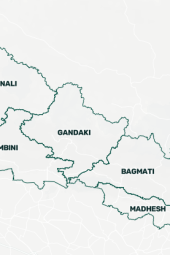Jajarkot Earthquake: Situation Analysis Report, 02
Summary
This Report details the response to the Jajarkot earthquake, resulting in 157 deaths and 256 injuries. Prime Minister Dahal, in the Disaster Risk Reduction and Management National Council meeting, emphasized the need for effective relief and rehabilitation, involving earthquake-affected individuals in these efforts, and improving preparedness based on lessons from the 2015 Gorkha Earthquake. He instructed quick action, revision of laws, effective aid distribution, and prevention of misuse of relief materials.
The Ministerial Cabinet decided to accept formally requested international aid, ensure search and rescue operations, provide free medical treatment, and manage temporary housing for victims. The Cabinet expressed gratitude for the support received and appealed for continued coordination for disaster management. To aid recovery, financial assistance was given to victims' families, and infrastructure restoration was prioritized. Security forces, including the Nepalese Army, APF, and Nepal Police, were mobilized for rescue operations, with the government nearing completion of these efforts.
The government has provided tents, blankets, and sleeping bags to the affected areas, and various ministries and officials are actively involved in distributing these supplies. Humanitarian actors like NGOs, INGOs, and UN agencies have mobilized to provide shelter, health support, and WASH initiatives, with coordination to avoid duplicating efforts. Organizations are also focusing on post-emergency recovery, including educational and mental health support. The government has appealed for financial support to the Prime Minister’s Relief Fund and has highlighted the extensive damage in Jajarkot, including to historic sites and public buildings. Survivors are sheltering in tents, facing cold weather challenges. The international community, including China, the United States, Russia, and India, has offered condolences and material support, with China and India already sending supplies.
The report concludes with recommendations for improving relief distribution and coordination, such as the need to define a one-door policy, centralize reporting systems, and communicate effectively with beneficiaries about aid distribution.
Categories:
DPNet Publication
Sub-Categories:
Situation Analysis Report
Publisher:
DPNet Nepal
Published Year:
2023
